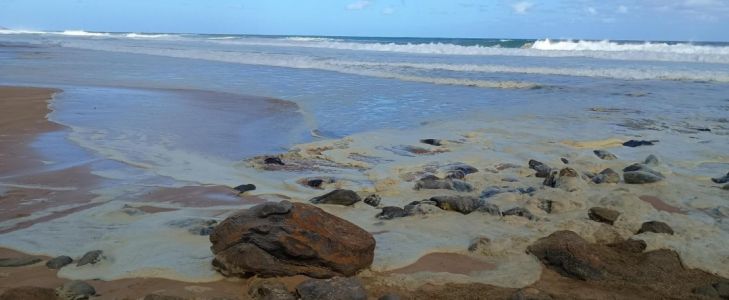 We recently posted about a mysterious foam on beaches of the Fleurieu Peninsula of South Australia, that is being blamed for sickening more than 100 surfers and for the deaths of leafy seadragons, fish, and octopuses. Now, the Australian Environment Protection Authority (EPA) has received results from water tests identifying the species Karenia mikimotoi (Kar-een-ia mickey-mow-toy) as the cause of the microalgae bloom on the Fleurieu Peninsula.
We recently posted about a mysterious foam on beaches of the Fleurieu Peninsula of South Australia, that is being blamed for sickening more than 100 surfers and for the deaths of leafy seadragons, fish, and octopuses. Now, the Australian Environment Protection Authority (EPA) has received results from water tests identifying the species Karenia mikimotoi (Kar-een-ia mickey-mow-toy) as the cause of the microalgae bloom on the Fleurieu Peninsula.
Karenia mikimotoi is toxic to fish and invertebrates and can cause general allergic-type responses in humans.
The EPA says that the event has been driven by an ongoing marine heatwave, with marine water temperatures currently 2.5C warmer than usual, as well as relatively calm marine conditions with little wind and small swell.
Karenia mikimotoi is a dinoflagellate species from the genus Karenia. Its first appearance was in Japan in 1935 and since then, it has appeared in other parts of the world such as the east coast of the United States, Norway, the English Channel, and southern Australia.
Blooms of this type of algae have caused mass mortalities of fish, shellfish, and other invertebrates in the coastal waters of many other countries, including Japan and New Zealand. The last time a large event of this type of algae was recorded in South Australia was in 2014 in Coffin Bay.
The EPA expects the microalgae will dissipate naturally over time depending on wind, swell and tidal conditions and they will continue to monitor the bloom.
Thanks to Dick Kooyman for contributing to this post.
